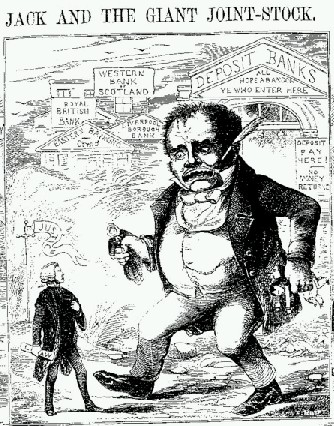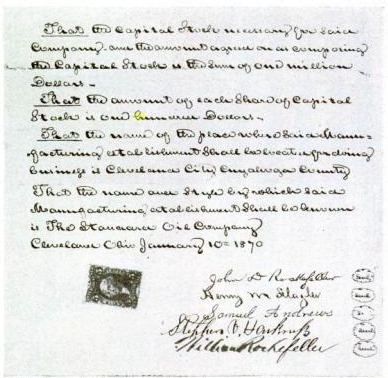|
Memorandum Of Association
The memorandum of association of a company is an important corporate document in certain jurisdictions. It is often simply referred to as the memorandum. In the UK, it has to be filed with the Registrar of Companies during the process of incorporation of a company. It is the document that regulates the company's external affairs, and complements the articles of association which cover the company's internal constitution. It contains the fundamental conditions under which the company is allowed to operate. Until recent it had to include the "object clause" which made the shareholders, creditors and those dealing with the company know what is its permitted range of operation, although this was usually drafted very broadly. It also shows the company's initial capital. It is one of the documents required to incorporate a company (law), company in India, the United Kingdom, Ireland, Canada, Nigeria, Nepal, Bangladesh, Pakistan, Afghanistan, Sri Lanka, and Tanzania and is also used in ... [...More Info...] [...Related Items...] OR: [Wikipedia] [Google] [Baidu] |
Company
A company, abbreviated as co., is a Legal personality, legal entity representing an association of legal people, whether Natural person, natural, Juridical person, juridical or a mixture of both, with a specific objective. Company members share a common purpose and unite to achieve specific, declared goals. Over time, companies have evolved to have the following features: "separate legal personality, limited liability, transferable shares, investor ownership, and a managerial hierarchy". The company, as an entity, was created by the State (polity), state which granted the privilege of incorporation. Companies take various forms, such as: * voluntary associations, which may include nonprofit organizations * List of legal entity types by country, business entities, whose aim is to generate sales, revenue, and For-profit, profit * financial entities and banks * programs or educational institutions A company can be created as a legal person so that the company itself has limi ... [...More Info...] [...Related Items...] OR: [Wikipedia] [Google] [Baidu] |
Companies Act 2006
The Companies Act 2006 (c. 46) is an act of the Parliament of the United Kingdom which forms the primary source of UK company law. The act was brought into force in stages, with the final provision being commenced on 1 October 2009. It largely superseded the Companies Act 1985. The act provides a comprehensive code of company law for the United Kingdom, and made changes to almost every facet of the law in relation to companies. The key provisions are: * the act codifies certain existing common law principles, such as those relating to directors' duties. * it transposes into UK law the Takeover Directive and the Transparency Directive of the European Union * it introduces various new provisions for private and public companies. * it applies a single company law regime across the United Kingdom, replacing the two separate (if identical) systems for Great Britain and Northern Ireland. * it otherwise amends or restates almost all of the Companies Act 1985 to varying degrees ... [...More Info...] [...Related Items...] OR: [Wikipedia] [Google] [Baidu] |
Memoranda
A memorandum (: memorandums or memoranda; from the Latin ''memorandum'', "(that) which is to be remembered"), also known as a briefing note, is a Writing, written message that is typically used in a professional setting. Commonly abbreviation, abbreviated ''memo'', these messages are usually brief and are designed to be easily and quickly understood. Memos can thus communicate important information efficiently in order to make dynamic and effective changes. In law, a memorandum is a record of the terms of a transaction or contract, such as a policy memo, memorandum of understanding, memorandum of agreement, or memorandum of association. In business, a memo is typically used by firms for internal communication, while Letter (message), letters are typically for external communication. Other memorandum formats include briefing notes, reports, letters, and binders. They may be considered grey literature. Memorandum formatting may vary by office or institution. For example, if the ... [...More Info...] [...Related Items...] OR: [Wikipedia] [Google] [Baidu] |
Business Documents
Business is the practice of making one's living or making money by producing or buying and selling products (such as goods and services). It is also "any activity or enterprise entered into for profit." A business entity is not necessarily separate from the owner and the creditors can hold the owner liable for debts the business has acquired except for limited liability company. The taxation system for businesses is different from that of the corporates. A business structure does not allow for corporate tax rates. The proprietor is personally taxed on all income from the business. A distinction is made in law and public offices between the term business and a company (such as a corporation or cooperative). Colloquially, the terms are used interchangeably. Corporations are distinct from sole proprietors and partnerships. Corporations are separate and unique legal entities from their shareholders; as such they provide limited liability for their owners and members. Co ... [...More Info...] [...Related Items...] OR: [Wikipedia] [Google] [Baidu] |
Legal Documents
Legal instrument is a legal term of art that is used for any formally executed written document that can be formally attributed to its author, records and formally expresses a legally enforceable act, process, or contractual duty, obligation, or right, and therefore evidences that act, process, or agreement.''Barron's Law Dictionary'', s.v. "instrument". Examples include a certificate, deed, bond, contract, will, legislative act, notarial act, court writ or process, or any law passed by a competent legislative body in domestic or international law. Many legal instruments were written ''under seal'' by affixing a wax or paper seal to the document in evidence of its legal execution and authenticity (which often removed the need for consideration in contract law). However, today many jurisdictions have done away with the requirement of documents being under seal in order to give them legal effect. Electronic legal documents With the onset of the Internet and electronic equip ... [...More Info...] [...Related Items...] OR: [Wikipedia] [Google] [Baidu] |
Corporate Law
Corporate law (also known as company law or enterprise law) is the body of law governing the rights, relations, and conduct of persons, companies, organizations and businesses. The term refers to the legal practice of law relating to corporations, or to the theory of corporations. Corporate law often describes the law relating to matters which derive directly from the life-cycle of a corporation.John Armour, Henry Hansmann, Reinier Kraakman, Mariana Pargendler "What is Corporate Law?" in ''The Anatomy of Corporate Law: A Comparative and Functional Approach''(Eds Reinier Kraakman, John Armour, Paul Davies, Luca Enriques, Henry Hansmann, Gerard Hertig, Klaus Hopt, Hideki Kanda, Mariana Pargendler, Wolf-Georg Ringe, and Edward Rock, Oxford University Press 2017)1.1 It thus encompasses the formation, funding, governance, and death of a corporation. While the minute nature of corporate governance as personified by share ownership, capital market, and business culture rules diff ... [...More Info...] [...Related Items...] OR: [Wikipedia] [Google] [Baidu] |
Table A
Table A in UK company law is the old name for the Model Articles or default form of articles of association for companies limited by shares incorporated either in England and Wales or in Scotland before 1 October 2009 where the incorporators do not explicitly choose to use a modified form. Table A was first introduced by the Joint Stock Companies Act 1856 (as 'Table B'), and then under its current name of 'Table A' by the Companies Act 1862. The existing form of Table A was introduced in 1985 by the subsidiary legislation passed under the Companies Act 1985, although it has been updated on several occasions since its introduction. Although Table A is the most frequently referred to, relating to generic companies limited by shares (the most common form), there are also pro forma constitutional documents for companies limited by guarantee without a share capital (Table C) and unlimited liability companies with a share capital (Table E). One advantage of having standard form c ... [...More Info...] [...Related Items...] OR: [Wikipedia] [Google] [Baidu] |
Memorandum Of Conversation
Memorandum of conversation (abbrev.: MEMCON) and also memorandum of a conversation and memo to the file refers to a method of contemporaneous documentation of a conversation in the form of a memorandum used by the United States federal government. ''The Weekly Standard'' characterized the use of the tactic in the U.S. government as among "the most basic ways of Washington". Method Typically an individual will document the events of the conversation as soon as possible after the occurrence. All material statements and discussed items are quoted and described as accurately as possible soon after the discussion and filed for future reference. Memcons function as documentation of historical events, such as conversations between heads of state and law enforcement officials. Specific developments discussed, the time of the meeting, location, and individuals in attendance are all documented in-depth within the memo. United States Department of Justice attorneys and Federal Bureau of Inve ... [...More Info...] [...Related Items...] OR: [Wikipedia] [Google] [Baidu] |
Constitutional Documents
In relation to juristic persons, the constitutional documents (sometimes referred to as the charter documents) are the documents which define the existence of an entity and regulate the structure and control of that entity and its members. The precise form of the constitutional documents depends upon the type of entity, such as corporations or private associations. Companies By convention, most common law jurisdictions divide the constitutional documents of companies into two separate documents: *the Memorandum of Association (in some countries referred to as the Articles of Incorporation) is the primary document, and will generally regulate the company's activities with the outside world, such as the company's objects and powers. *the Articles of Association (in some countries referred to as the by-laws) is the secondary document, and will generally regulate the company's internal affairs and management, such as procedures for board meetings, dividend entitlements etc. In m ... [...More Info...] [...Related Items...] OR: [Wikipedia] [Google] [Baidu] |
Articles Of Association
In corporate governance, a company's articles of association (AoA, called articles of incorporation in some jurisdictions) is a document that, along with the memorandum of association (where applicable), forms the company's constitution. The articles define the responsibilities of the Board of directors, directors, the nature of business, and the mechanisms by which shareholders exert control over the board of directors. Articles of association are essential to corporate operations, as they may regulate both internal and external affairs. Articles of incorporation, also referred to as the certificate of incorporation or the corporate charter, is a document or charter that establishes the existence of a corporation in the United States and Canada. They generally are filed with the Secretary of State in the U.S. State where the company is incorporated, or other list of company registers, company registrar. An equivalent term for limited liability companies (LLCs) in the United ... [...More Info...] [...Related Items...] OR: [Wikipedia] [Google] [Baidu] |


